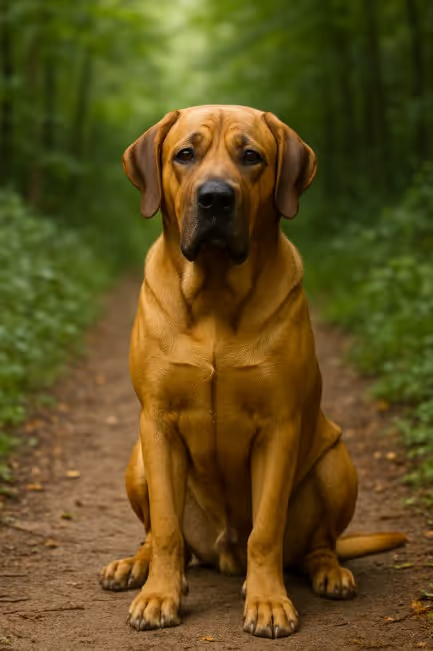The Broholmer is a calm, confident Danish mastiff-type guardian—big-boned, steady, and family devoted. Bred to watch estates and accompany hunters, this giant breed is gentle with its own people yet naturally reserved with strangers. If you’re asking “Are Broholmers good family dogs?”—yes, in experienced homes that prioritize early socialization and structure. “Do Broholmers drool?”—expect some. “Do Broholmers shed?”—moderately, with seasonal bursts.

The Broholmer originated in Denmark as an estate guardian and big-game helper. Named after Count Sehested of Broholm, who standardized the type in the 1800s, the breed declined after WWII and was rebuilt by Danish fanciers using strict health/temperament selection. Today it’s recognized by the FCI and Danish Kennel Club, with small but growing populations in Europe and North America (often via club/FCI or AKC FSS pathways).
A rectangular, powerfully built Molosser with a broad head and thick neck.
Low trimming; steady upkeep for skin, ears, and seasonal shed.
Moderate, joint-friendly work suits this giant.
Steady, intelligent, and handler-sensitive—calm consistency wins.
Grow slow; keep lean for joints and heart.
A robust guardian with size-related risks—screen carefully.
Rare in Canada—plan ahead and verify health/temperament transparency.
Are Broholmers good family dogs?
Yes—devoted and gentle in experienced homes that provide early socialization, training, and management.
Do Broholmers drool?
Yes—moderate drool, especially after drinking or exercise; keep towels handy.
Do Broholmers shed a lot?
Moderately year-round with heavier seasonal sheds; weekly brushing helps.
Are Broholmers hypoallergenic?
No.
How much exercise does a Broholmer need?
About 45–60 minutes daily of low-impact walks and training; avoid repetitive pounding.
Are Broholmers good apartment dogs?
Generally not ideal—possible only with strong routines, space planning, and daily outlets.
Broholmer vs Boerboel—what’s different?
Both are powerful guardians; Broholmers typically present a calmer, more reserved European estate-guardian style, while Boerboels often show higher farm-guardian drive/intensity. Lines vary—meet breeders’ dogs.
What health tests should breeders do?
Hips/elbows, cardiac, and CAER eye exams; discuss bloat prevention and family history.
How do I manage a giant puppy’s growth?
Use a giant-breed puppy formula, keep lean, limit impact/jumping, and follow your vet’s growth plan